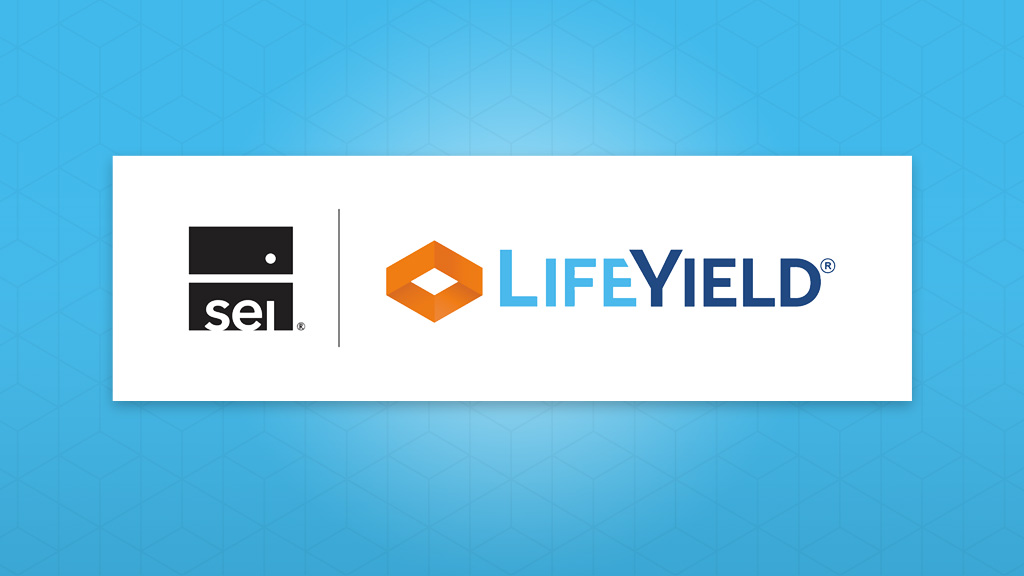Using Asset Location to Minimize Taxable Income

Many clients are keen on saving and investing in retirement accounts. And the stock market’s performance has bolstered many hopes of retiring with the assets needed for a comfortable retirement.
What many clients don’t know, though, is how vital it is to make the right choices in investment and retirement accounts so that taxes don’t erode their savings or dilute their retirement dreams.
For that information, they are looking to their advisors to help them understand concepts like asset location, tax efficiency, and the unified managed household (or UMH) to optimize client outcomes,
Getting a Better Understanding of Asset Location
The investment process spans many different types of accounts that people can use to invest and save money. Where asset location comes in is choosing accounts with the most tax-advantageous – taxable, tax-deferred, or tax-exempt – status for the assets invested. The goal is to minimize taxes – and maximize income (someday) in retirement.
The types of accounts are:
- Taxable Accounts: Assets in these accounts are taxed when dividends or interest earned realize a capital gain from sales of assets or an increase in their value. Traditional brokerage accounts are taxable accounts. They hold securities like stocks, bonds, exchange-traded funds (ETFs), mutual funds, and more.
- Tax-Deferred Accounts: Tax-deferred accounts allow investors to delay paying taxes (and, in the process, reduce their current taxable income) until they withdraw money from the accounts. Investors pay taxes on withdrawals at the same rates they pay taxes on ordinary income. These accounts include many employer-sponsored plans like 401(k)s and individual retirement accounts (IRAs).
- Tax-Exempt Accounts: Investors in tax-exempt accounts pay income taxes upfront but avoid paying any more taxes – provided they follow the rules for the accounts. Examples of these accounts include Roth 401(k) and Roth IRAs.
Health savings accounts (HSAs) are a fully tax-exempt type of account. HSA account owners can make pretax or tax-deductible contributions up to a limit set by the Internal Revenue Service (IRS) and not pay taxes on earnings or withdrawals if they use the accounts to pay or reimburse themselves for qualified medical expenses.
The tax treatment of different investments – and an individual’s tax bracket — are also factors in choosing where to locate assets. Those can be changeable, as we’ve seen with the changes in tax laws just over the past couple of presidential administrations.
Don’t Confuse Asset Allocation and Asset Location
People tend to mix up asset allocation and asset location, but these concepts are unique, and they each have a place at the table in your client portfolio management.
Asset allocation is a process that advisors will take clients through as they are setting up accounts. And it’s one they revisit throughout the lifetime of their investor-advisor relationship.
Asset allocation is an investment strategy that attempts to balance the risk of owning various assets versus the potential rewards from those assets. It involves adjusting the percentage of multiple assets within the portfolio based on the investors’ individual (and, better yet, household) risk tolerance, goals, and investment periods (or how long they plan to hold the investments until they need to sell them for income or another need).
Asset allocation is also a way for investors to cushion their risk with a portfolio of assets in diverse sectors — like large-, medium- and small-cap stocks and mutual funds – that sometimes trend in different directions, depending on the economy.
On the other hand, asset location is a tax-minimizing strategy that takes advantage of the different tax treatments of investments and accounts.
Investments that generate short-term capital gains, interest, or dividends may be best held in tax-advantaged accounts. Investments that produce long-term capital gains, for example, belong in taxable accounts.
In other words, investors can take advantage of tax-deferral or tax-exemption accounts to invest in assets that would present a big annual tax bill if they held them in taxable accounts. For accounts that are managed for tax efficiency or hold investments for long-term gains, taxable accounts may be the most appropriate location.
The Different Allocation Approaches
Asset allocation approaches come in several models and sizes. It can involve active asset management or be passive. Advisors (and their firms) may have preferences and vary their approach based on each client household’s timelines, income needs, and comfort with risk.
- Strategic Asset Allocation: Describes a balanced combination of assets based on each class’s expected rate of return. Also referred to as the “buy and hold” strategy.
- Constant-Weighting Asset Allocation: Describes asset allocation that includes constant rebalancing of the portfolio. In short, there are no hard-and-fast rules in portfolio rebalancing.
- Tactical Asset Allocation: Advisors use this when they’re identifying short-term opportunities and can make small, temporary moves for the assets within the portfolio.
- Dynamic Asset Allocation: With this asset allocation style, the investor (or advisor) is constantly adjusting assets in a portfolio as the market rises and falls.
- Insured Asset Allocation: This is particularly appropriate for risk-averse investors, this type of asset allocation sets a threshold or base for the value a portfolio cannot drop under. If it does, the advisor and client reallocate or may even reconsider the investment strategy.
- Integrated Asset Allocation: An integrated allocation strategy is what the name implies: a combination of allocation strategies.
Asset allocation is the foundation of an investment portfolio. It is a topic an advisor will raise periodically with client households to be sure they’re staying within the guardrails, so to speak, of their risk tolerance, the time horizon for investing, changes in their families and their plans, and many other circumstances.
But advisors who outperform the pack are equally competent in other strategies to maximize not just returns in the short term for lifetime income for clients. And to do that, they must be savvy about taxes and about asset location.
The Point of Asset Location Strategies
Clients today are hardwired to financial news and market tickers. They are often less informed about – or even blind to – how choices can make a difference in the taxes they pay the federal government or their state governments.
Asset location isn’t intended to limit what clients invest in. It is supposed to help see that investors hold the assets in the types of accounts that will yield the best tax treatment for the household. With clients appearing in your office with lists of accounts they have opened, funded – and sometimes forgotten, asset location is key to proving your worth as an advisor.
Asset location begins with your engagement with a client household and continues for as long as you work with them. For the superior advisors, those engagements last for decades. But it will take educating clients and illustrating the concept to help them understand how asset location can save them money on taxes. And that without asset location, taxes will be a drag on their potential to accumulate today and their ability to draw income in the future.
Who Benefits from Asset Location?
Asset location is particularly relevant to clients who:
- Are paying high marginal income tax rates. Since they are paying the most in taxes, they stand much to gain from evaluating their asset location and adjustment for better tax efficiency.
- Expect to pay lower marginal tax rates in the future. Career change, entrepreneurship, or retirement are some events that could reduce a household’s tax rates in the future. Using active asset location may help them have taxes deferred for when they are in a lower tax bracket.
- Have significant assets in tax-efficient investments held in taxable accounts. There is more potential to increase your client’s after-tax returns using technology to support optimal asset location for tax-inefficient investments, like bonds and bond funds.
- Expect their investments to last more than 10 years. Asset location strategies are not an instant reward system. It can take 10 or more years for a client to see the return from asset location that they hope for. But those with a timeline of 10 years or longer have the most significant potential for saving with asset location.
Working a Unified Managed Household Strategy
The fact is, many clients plan their financial futures and retire in pairs, not individually. Spouses and partners share homes, children, expenses, funds, and retirement plans. With longer life spans, even parents and children have joined plans for life after work – and for how they will pay themselves in retirement.
Enter UMH.
UMH has been buzzed about for years but was a pipe dream because of the complexity it demanded. It is the practice of advisors assessing the entire portfolio of household assets in aggregate, then adjusting the asset allocation and asset location to maximize tax efficiency and establish how accumulated assets will provide income.
Advisors used to have to juggle client accounts and asset management across platforms. They often had a limited view of client household assets because they weren’t managing them all. It felt like an endless game of hopscotch combined with blind man’s bluff.
Today firms are working with urgency to provide advisors with comprehensive and coordinated platforms that include:
| Customer Relationship Management Systems | Allow advisors to segment the books, position the most relevant offerings to clients and personalize and target offerings for specific clients. |
| Financial Planning Applications | Provide comprehensive financial and tax advice in multiple areas, including investments, insurance, and lending solutions that consider the client’s assets, liabilities, and potential for earnings. |
| Holistic Risk Management | Supporting clients and connecting their overall investment goals with the way they view their world, leading to better investor outcomes |
| Tax Optimization | Optimizes practices across multiple accounts and products to ensure that tax-smart asset location has taken place |
| Account Data Aggregation | Unifying all the holdings that various custodians hold for a household |
| Optimal Income Sourcing | Income sourcing and sequencing from multiple accounts, products, and other income sources such as Social Security, pensions, Roth IRA, 401(k), and other tax-exempt accounts |
LifeYield APIs Fire 21st Century Financial Planning and Advice
Advisory firms, competing for clients and for assets to manage, used to lean into developing their own platforms and algorithms. Today, they recognize that looking for partners who can help them provide the best possible client experience and achieve UMH-style accounts is the surest route to success.
LifeYield partners with many of the industry’s leading firms with its library of application programming interfaces (or APIs) that can handle the complex (but necessary) work of coordinating household accounts for cost, risk, and taxes. These three things have the most effect on a household’s ultimate outcomes from their investing.
LifeYield API solutions include:
- Multi-Account Rebalancing: The industry’s only true multi-account rebalancing engine, this API identifies mislocated assets across household accounts and automatically executes a tax-efficient rebalance aligned to the portfolio’s target asset allocation. It also identified opportunities for tax harvesting.
- Asset Location: Our proprietary asset location algorithm scans all accounts in a household portfolio and assigns a score, from 0 to 100, for tax efficiency. Then it identifies the tax-smart location for every asset in that portfolio and rescores the asset location on the same scale. Would your client like to go from a 30 to a 75? And isn’t that a powerful way to demonstrate what you’re talking about when you say, “asset location?”
Other LifeYield APIs support firms and clients:
- Identify opportunities for tax harvesting gains or losses, identify appreciated assets for a gift or charitable giving, and avoid wash sales.
- When it’s time to withdraw, coordinate what to sell, how to rebalance, and how to locate assets across a household’s portfolios to maximize income and minimize taxes.
- Helping clients identify their optimal Social Security filing dates for maximum household income over their lifetimes.
All this without needing a large-scale replacement of firm technology. Indeed, bringing these capabilities to your firm and allowing advisors to demonstrate their value might very possibly increase your assets under management and expand your base of clients.
Interested in our asset location solution? A demo can show how LifeYield can benefit you and meet the demands of everyone, from beginning investors to clients approaching or in retirement. Book a demo today.
Monthly insights from our Chief Growth Officer, Jack Sharry
Get exclusive insights and interviews from around the industry

 By
By 




